Union Film and TV Budgeting Strategies

Film budgeting is a critical aspect of the motion picture industry. It's a complex process that requires a deep understanding of various factors. From payroll management to labor relations, every detail matters. The budget impacts not only the production process but also the final product. Understanding the intricacies of collective bargaining agreements and union contracts is crucial. These agreements significantly influence wages, working conditions, and overall budgeting.
FTV Consulting aims to guide producers, studio finance executives, and production accountants by providing a comprehensive understanding of film budgeting basics. We'll review the role of payroll companies, the importance of accurate record-keeping, and the process of preparing a film budget. We'll also explore budgeting strategies and the impact of expenses on the final film product. Whether you're a new, independent producer or a seasoned studio finance executive, this article will equip you with the knowledge you need. It's time to navigate the complexities of film budgeting with confidence.
The Essence of Film Budgeting in the Motion Picture Industry
Film budgeting is the backbone of any production. It's a detailed financial plan that outlines the estimated costs of every aspect of a film project. From pre-production to post-production, every expense is accounted for. The budget is not just a financial document. It's a strategic tool that guides decision-making throughout the production process. It helps producers allocate resources effectively, manage costs, and ensure the project stays on track financially.
Understanding film budgeting is crucial for anyone involved in the motion picture industry. It's not just about numbers; it's about understanding how those numbers translate into creative decisions, labor relations, and ultimately, the success of the film.
Key Components of a Film Budget Breakdown
A film budget breakdown is a detailed list of all the costs associated with a film project. It's a roadmap that guides the allocation of funds across various departments and stages of production. Understanding the key components of a film budget breakdown is essential for effective financial management.
The budget breakdown is typically divided into three main categories: Above-the-Line expenses, Below-the-Line costs, and Post-Production and Marketing expenses. Each category encompasses different aspects of the production process and requires careful planning and management.
Here's a brief overview of these categories:
- Above-the-Line Expenses: These are the costs associated with the creative talent and decision-makers in a film project.
- Below-the-Line Costs: These are the technical and logistical costs of physically producing the film.
- Post-Production and Marketing: These are the costs associated with finalizing the film and promoting it to audiences.
Above-the-Line Expenses
Above-the-Line expenses refer to the costs associated with the key creative personnel in a film project. This includes the salaries of the director, producers, screenwriters, and main cast. These costs are usually negotiated and agreed upon before production begins.
These expenses also include the costs of acquiring rights to a script or story, and any development costs incurred in the early stages of a project. They are called "above-the-line" because they are listed at the top of a traditional film budget, reflecting their importance and priority.
Below-the-Line Costs
Below-the-Line costs encompass the technical and logistical expenses of a film production. This includes the costs of production crew salaries, equipment rentals, location fees, set design, costumes, and catering. These costs are usually variable and can change based on the specific needs of the production.
These expenses also include the costs of transportation, insurance, and other logistical aspects of production. They are called "below-the-line" because they are listed below the "line" separating them from the above-the-line expenses in a traditional film budget.
Post-Production and Marketing
Post-Production and Marketing costs are the expenses associated with finalizing the film and promoting it to audiences. This includes the costs of editing, visual effects, sound design, music licensing, and other post-production processes.
Marketing expenses include the costs of advertising, public relations, distribution, and other promotional activities. These costs can vary greatly depending on the scale of the film and the marketing strategy. They are crucial for ensuring the film reaches its intended audience and achieves commercial success.
Preparing a Film Budget: A Step-by-Step Guide
Preparing a film budget is a meticulous process that requires careful planning and strategic thinking. It involves estimating the costs for every aspect of the film, from pre-production to post-production. This includes salaries, equipment, locations, post-production services, and marketing expenses.
The first step is to break down the script into scenes and identify the resources needed for each scene. This includes cast, crew, locations, props, costumes, and special effects. A detailed script breakdown provides a roadmap for the budget and helps identify potential cost-saving opportunities.
Next, estimate the costs for each line item in the budget. This involves researching market rates, negotiating with vendors, and consulting with department heads. It's important to be realistic and thorough in this step to avoid unexpected costs later on.
The following steps can guide you in preparing a film budget:
- Break down the script into scenes and identify resources needed.
- Estimate costs for each line item.
- Allocate funds for pre-production, production, and post-production.
- Include a contingency fund for unexpected expenses.
- Review and revise the budget as needed.
- Secure financing and manage cash flow throughout the production.
Development to Post-Production: Allocating Funds Strategically
Allocating funds strategically is crucial for managing a film budget effectively. This involves prioritizing expenses and making tough decisions to stay within budget. It's important to balance the creative vision of the film with the financial realities of production.
During pre-production, funds are allocated for script development, casting, location scouting, and production planning. During production, the bulk of the budget is spent on shooting the film. This includes salaries, equipment rentals, location fees, and production design. Post-production involves editing, visual effects, sound design, and marketing.
Contingency Funds and the Unforeseen
No matter how carefully a budget is planned, unexpected expenses are inevitable in film production. This could be due to weather delays, equipment failures, or script changes. Therefore, it's important to include a contingency fund in the budget.
A contingency fund is a reserve of money set aside to cover unforeseen costs. It provides a financial cushion and allows the production to continue smoothly in the face of unexpected challenges. The size of the contingency fund depends on the scale and complexity of the production, but it typically ranges from 10% to 20% of the total budget.
Budgeting Strategies for Optimizing Resources
Effective budgeting strategies can help optimize resources and manage production costs. One such strategy is to prioritize spending based on the creative needs of the film. This involves allocating more funds to areas that have a significant impact on the film's quality and audience appeal.
Another strategy is to leverage tax incentives and rebates offered by various jurisdictions. These incentives can significantly reduce production costs and should be factored into the budget planning process. It's also important to stay flexible and be prepared to adjust the budget as needed throughout the production.
Negotiating Rates and Managing Production Costs
Negotiating rates with vendors, service providers, and talent can result in substantial cost savings. This requires a good understanding of market rates and strong negotiation skills. It's also important to build strong relationships with vendors and service providers, as they can offer discounts and favorable terms to repeat customers.
Managing production costs effectively involves careful tracking of expenses and regular budget reviews. This allows for timely adjustments and helps prevent cost overruns. It's also crucial to maintain good communication with the production team and ensure everyone understands the budget constraints.
Lastly, consider hiring a professional payroll service to handle complex labor issues. This can help ensure compliance with labor laws and union contracts, and can free up time for the production team to focus on the creative aspects of the film.
The Role of Payroll Companies in Film Production
Payroll companies play a crucial role in film production. They manage the complex task of paying cast and crew members, ensuring compliance with labor laws and union agreements. This involves calculating wages, withholding taxes, and processing payments.
A reliable payroll company can help producers navigate the intricacies of handling labor payments in the film industry. They have a deep understanding of collective bargaining agreements and can ensure that all payments are made in accordance with these contracts. This can help avoid legal complications and disputes. Moreover, payroll companies can provide valuable insights into budgeting strategies. They can help producers optimize labor costs, manage fringes, and make informed decisions about wages and working conditions.
Managing Payroll Taxes and Fringes
Payroll taxes and fringes are significant components of a film budget. Payroll taxes are mandatory contributions to government programs, such as Social Security and Medicare. Fringes are additional costs related to employment, such as health insurance, pension contributions, and vacation pay. Managing these costs can be complex, especially when dealing with a large cast and crew. Payroll companies can help by calculating these costs accurately and ensuring that they are paid on time. They can also advise on strategies to minimize these costs, such as taking advantage of tax credits and incentives.
Payroll companies can help producers understand the implications of these costs on their budget. They can provide detailed reports and forecasts, allowing producers to plan their budgets effectively and avoid unexpected expenses.
A reliable payroll company can assist with record keeping, ensuring accuracy and compliance. Their expertise can be invaluable in managing a film budget effectively and ensuring a successful production.
Record Keeping: The Backbone of Financial Management
Accurate record-keeping is essential for effective financial management in film production. It involves tracking all income and expenses from pre-production to post-production. This includes wages, equipment rentals, location fees, and post-production costs.
Good record-keeping allows producers to monitor their budgets closely and make informed decisions. It provides a clear picture of where the money is going and helps identify areas where costs can be reduced. Moreover, it is crucial for audits and financial reporting, ensuring transparency and accountability. Furthermore, record-keeping is vital for compliance with labor laws and union agreements. It provides evidence of wages paid, hours worked, and conditions met. This can help avoid disputes and legal complications.
Legal and Compliance Considerations in Film Budgeting
Legal and compliance considerations play a crucial role in film budgeting. Understanding and adhering to labor laws and union contracts is essential to avoid legal complications and financial penalties. This includes complying with minimum wage laws, overtime regulations, and working conditions stipulated in collective bargaining agreements.
It's also important to budget for legal fees and clearances. This includes costs associated with securing rights to scripts, music, and other intellectual property. Legal fees may also be incurred for contract negotiations, dispute resolution, and compliance audits.
Lastly, insurance and risk management should be factored into the budget. This includes production insurance to cover potential losses due to accidents, equipment damage, or production delays. It also includes liability insurance to protect against claims for personal injury or property damage.
Union Agreements and Labor Laws
Union agreements and labor laws significantly impact film budgeting. These agreements set the wages, working conditions, and benefits for unionized workers. They also stipulate the terms for overtime pay, meal breaks, and rest periods.
Understanding the specific Collective Bargaining Agreements (CBAs) for unionized workers is crucial. The CBA sets the minimum terms and conditions for employment, and non-compliance can result in hefty fines and legal disputes. It's also important to stay updated with the latest changes in union agreements, as these can affect labor costs and working conditions.
Maintaining good labor relations can prevent costly disputes and production delays. This involves treating all workers fairly, respecting their rights, and addressing any grievances promptly and professionally. It also involves negotiating in good faith with unions and adhering to the terms of collective bargaining agreements.
Navigating Union Contracts and Collective Bargaining Agreements
Union contracts and collective bargaining agreements are a key aspect of labor relations in the film industry. They set the terms and conditions of employment for unionized workers, including wages, working hours, and benefits. Navigating these agreements can be challenging, especially for independent producers who may not have extensive experience in labor relations.
Labor Relations Consultants can provide valuable assistance in this area. They can help producers understand the terms of these agreements and help ensure that all payments are made in accordance with them. This can help avoid disputes and ensure a smooth production process. Moreover, labor consultants can advise on strategies to manage labor costs effectively. They can help producers negotiate favorable terms with unions, manage overtime costs, and optimize the use of union and non-union labor. Their expertise can be invaluable in managing a film budget effectively and ensuring a successful production.
The Art and Science of Film Budgeting
Film budgeting is both an art and a science. It requires a deep understanding of the financial, legal, and logistical aspects of film production. It also requires creativity and flexibility to adapt to changes and overcome challenges.
In conclusion, mastering the basics of film budgeting is essential for anyone involved in the motion picture industry. It's a complex but rewarding process that can make the difference between a film's success or failure. With the right knowledge, tools, and strategies, you can create a realistic and effective budget that ensures the financial viability of your film project.









